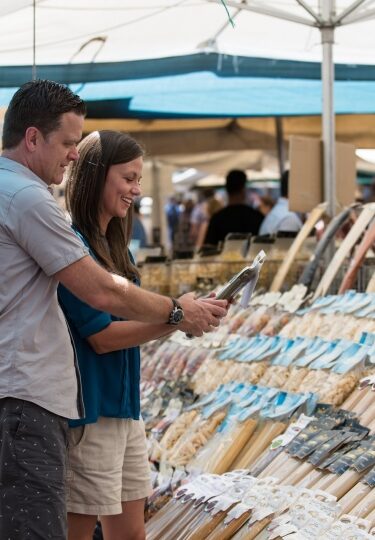The markets in Italy are some of the most vibrant in the world. While regional variants abound, these cultural vortices are united by an innate, overarching Italian identity. Think gesticulating stall-owners, irresistible produce, and often gorgeous (and historic) surroundings.
Here’s a list of some of the best markets in Italy to explore.
Mercato di Campo dei Fiori, Rome
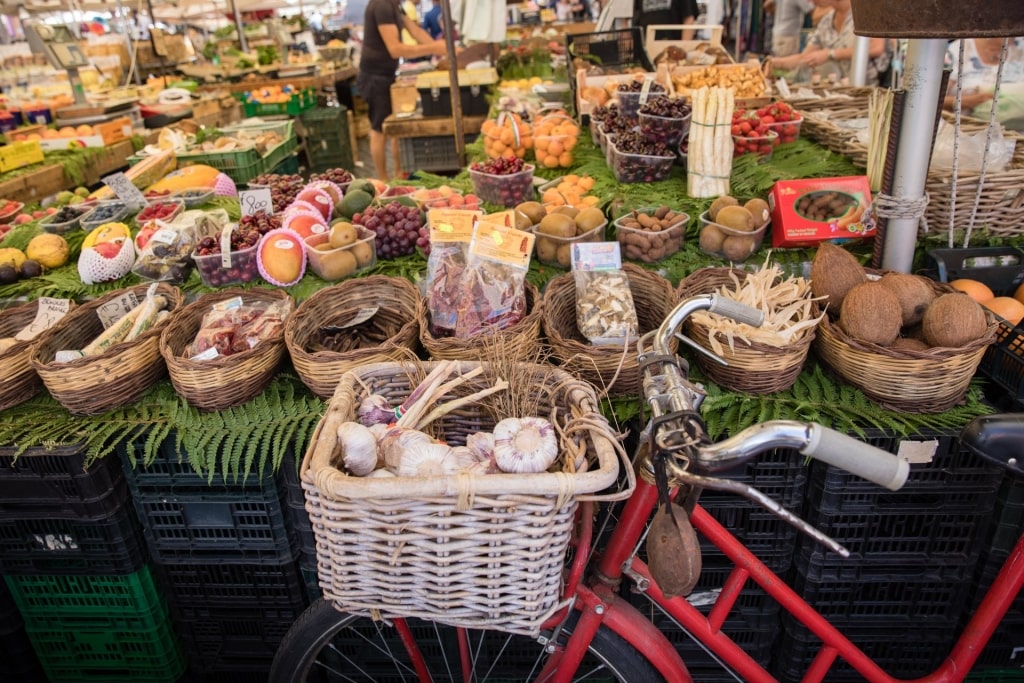
Mercato di Campo dei Fiori, Rome
Named for a flower meadow that existed here prior to the creation of the piazza in the 15th-century, the Mercato di Campo dei Fiori, just south of Piazza Navona, is one of the city’s most beloved markets.
Only in Rome could you describe a market as “relatively recent” that began operations in 1869. The history of its square, however, is longer and more checkered.
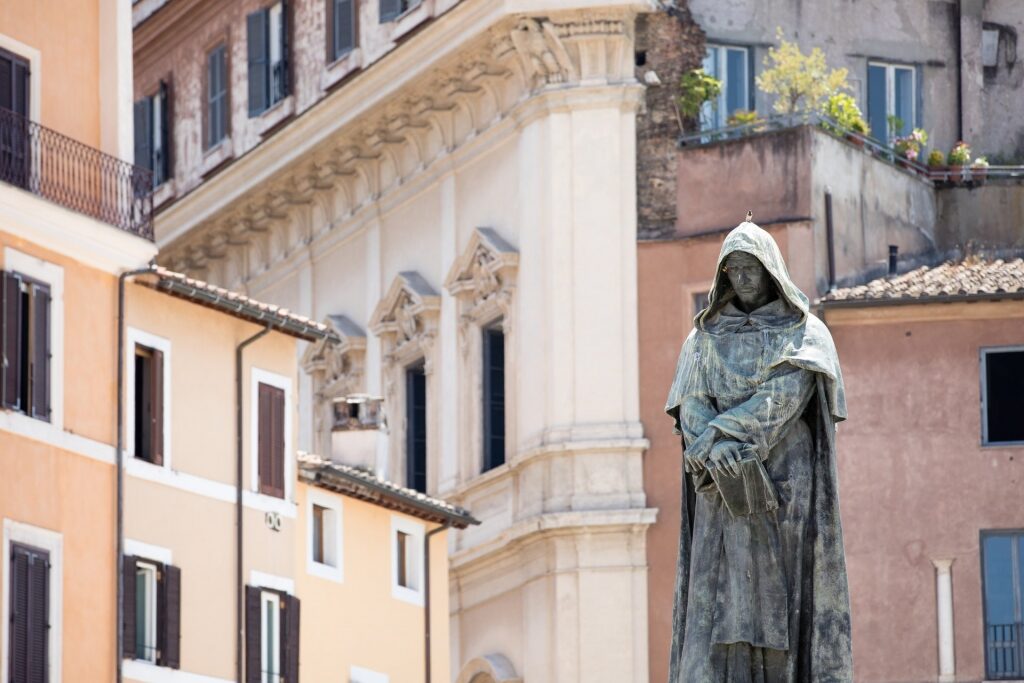
Mercato di Campo dei Fiori, Rome
The central statue of friar Giordano Bruno, rising above the canvas protecting the tender aubergine skins from the Roman sunshine, reminds shoppers that this used to be a place of execution. Bruno lost his life here on February 1, 1600.
The piazza’s later history is happily more bucolic. The market used to be the preserve of the “vignarole”, the farmers’ wives who’d horse-and-cart into town with their produce. Once they’d set up, they’d set about cleaning their goods, splashing muddy water on the paving stones of the square.
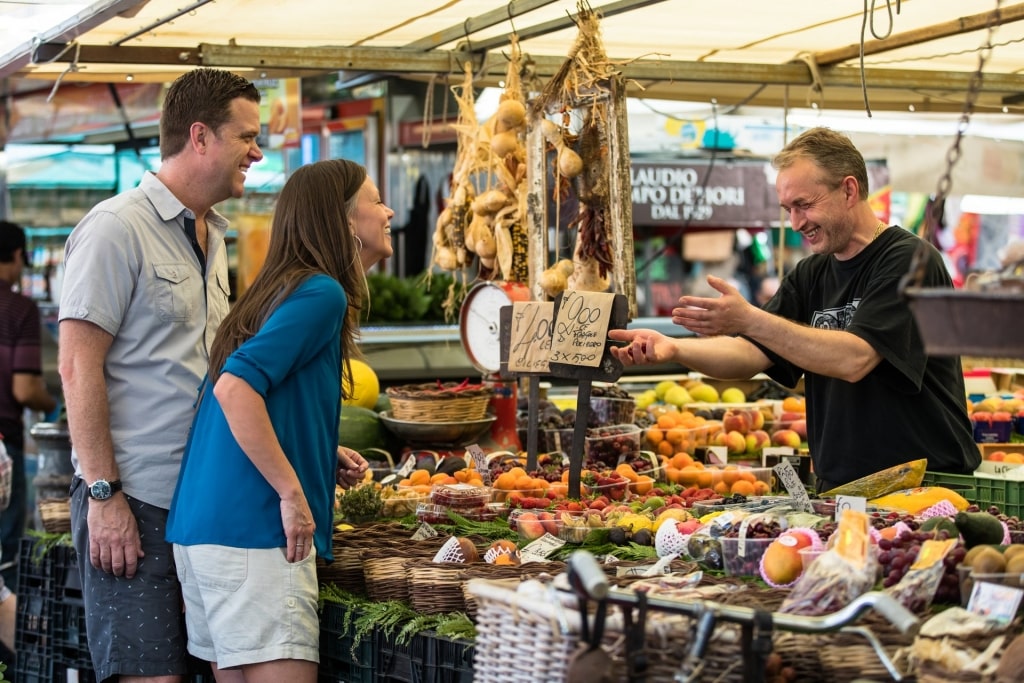
Mercato di Campo dei Fiori, Rome
Today, its focus remains on fruit and vegetables. Alongside the piles of violet-tinted Roman artichokes and strings of vibrant chilies, you’ll find pretty everything else you need for the store cupboard. Stock up on snowy grains of arborio rice, fresh fish, and even kitchenware.
If you have at least three days in Rome, it’s worth visiting in the evening, as the stalls shut up shop and the piazza transforms into a nightlife hub. Check out Taba Café Campo de’ Fiori for friendly service and aperitivo as delicious and colorful as the daytime market.
Read: What to Eat in Rome
Mercato di Rialto, Venice
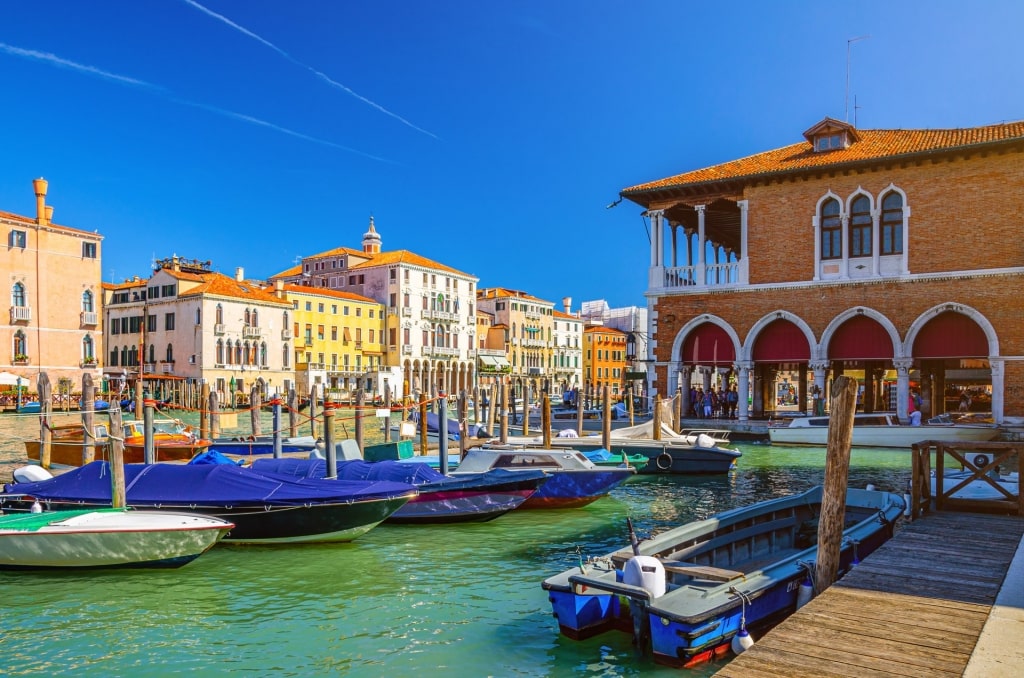
Mercato di Rialto, Venice
Of all the markets in Italy, the Venetian Mercato di Rialto must be one of the most dynamic. Its goods flood in daily by boat and the market snakes along the amphibious city’s cobbled lanes and canals.
This historic food market in Venice is located next to the famously elegant Rialto Bridge. The Mercato di Rialto’s daily din of commerce has rung in the air near the Church of San Giacometto for seven centuries. Arrive before 9 p.m. to experience the full visceral clatter of its opening throes.
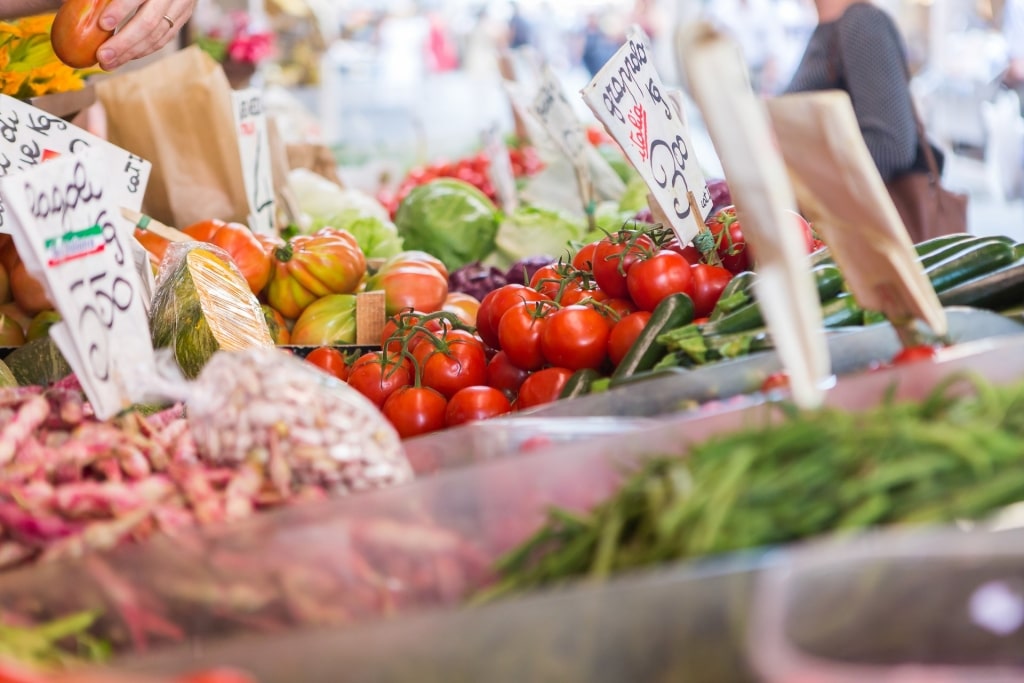
Mercato di Rialto, Venice
Although, if you sleep in, it’s still full of life until closing time at 1 p.m. Some of the Venetian specialties you should sequester into your shopping bag are the batons of white asparagus, livid leaves of Treviso radicchio harvested on nearby islands, and, of course, the catch of the lagoon (at its most varied at the market’s neighboring Pescateria, or fish section).
Mercato Centrale, Florence
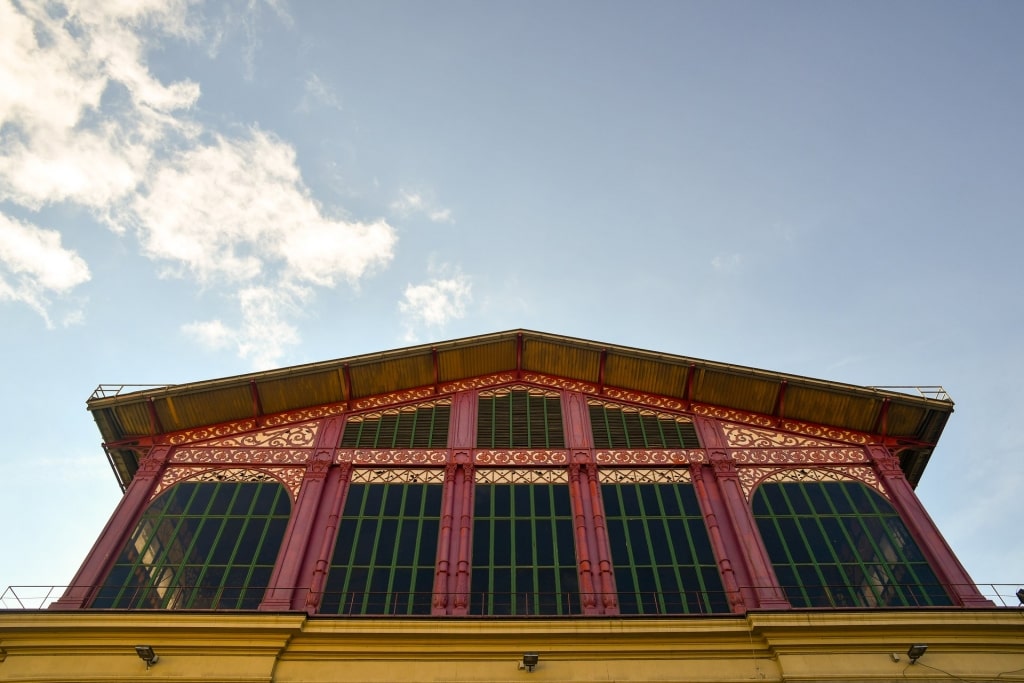
Mercato Centrale, Florence
The Mercato Centrale is a shrine to Italian cuisine tucked away in the historic center of Florence.
The stately 19th-century building—a former fish and meat market—was constructed to celebrate Florence’s short tenure as the capital of the newly unified Italy. Today, the fully renovated market unifies all comers in experiencing a gnawing hunger as they alight from the escalator to the first-floor food hall.
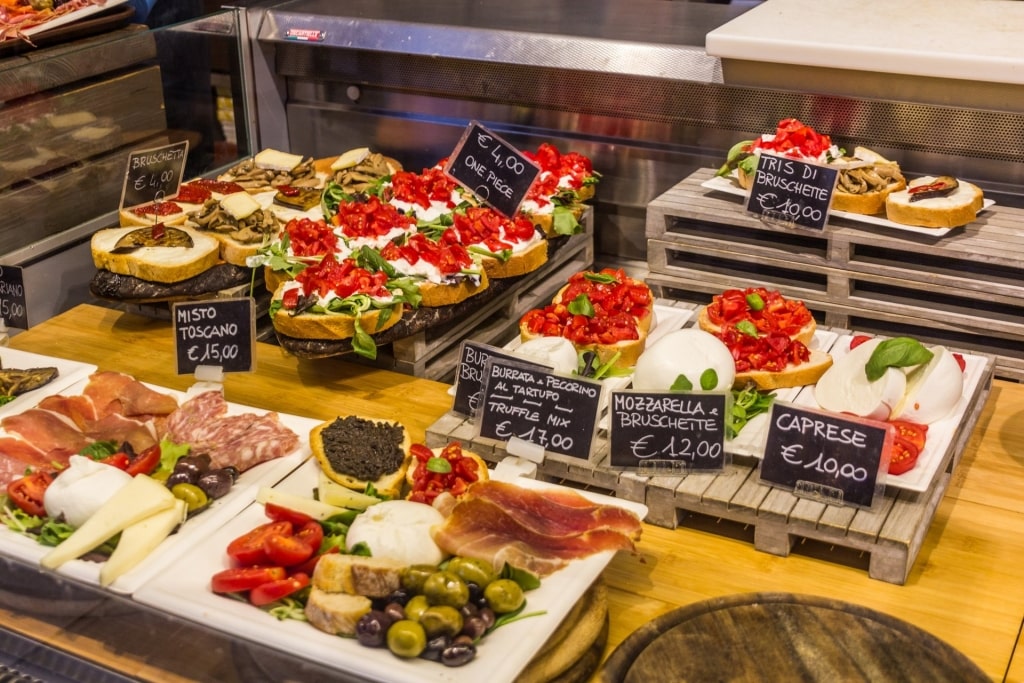
Mercato Centrale, Florence
What you’ll find is that it’s more than just a food hall. There’s an overarching philosophy of Florentine food at work here. Not only are the stalls selling delicious cuisine from the region (and beyond), but they’re also bringing in the finest local produce (sold on the ground floor) which is then employed in the kiosk kitchens.
Talk to the stall owners and they readily share their passion for their work. Alongside the lunching opportunities, cooking classes also run regularly on-site that you can try even if you only have two days in Florence. On any given day, there is a heady aroma here that can only be described as “the full gustatory”.
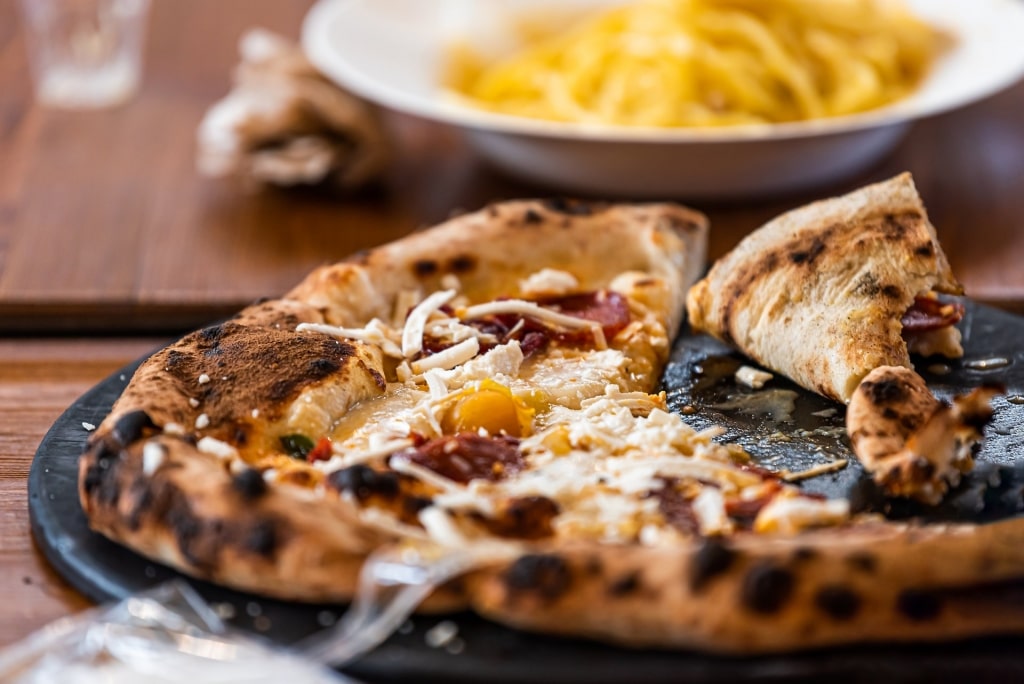
Mercato Centrale, Florence
Freshly delivered buffalo mozzarella from Naples makes its way onto the award-winning pizzas that you’ll find here. Beef from local Chianina cows is used in Tosca’s umami Tuscan ragu. And join the line at Lorenzo Nigro for a lampredotto panino.
This latter option, the Florentine tripe sandwich, the offal stewed to soft, chewy perfection,
is adored by the locals, making it one of the most popular Tuscan dishes to try. Round things off with a visit to “Il cioccolato e il gelato” run by World Pastry Champion Cristian Beduschi.
Mercato del Porcellino, Florence
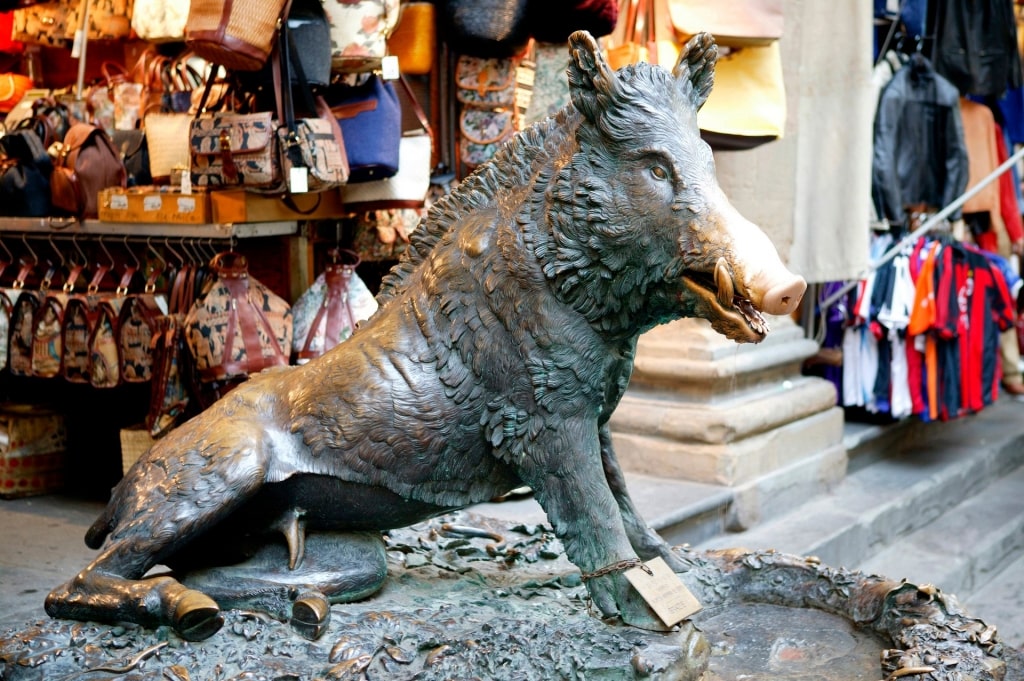
Mercato del Porcellino, Florence
Strung with garlands and sheltering beneath the elegant arches of a 16th-century loggia is Florence’s Mercato del Porcellino.
Its delightful name, ”the Market of the Little Pig”, is bestowed by the so-called Piglet Fountain located in the Piazza del Mercato Nuovo, where the market is located. The bronze fountain itself is a 17th-century copy of a Roman-era fountain tucked away in the Uffizi Gallery. The boar has a shiny nose because you’ll apparently return to Florence if you rub it.
This is probably also the only one of the markets in Italy that features in a fairy tale. “The Bronze Pig” by Hans Christian Andersen is based on this Florentine landmark.
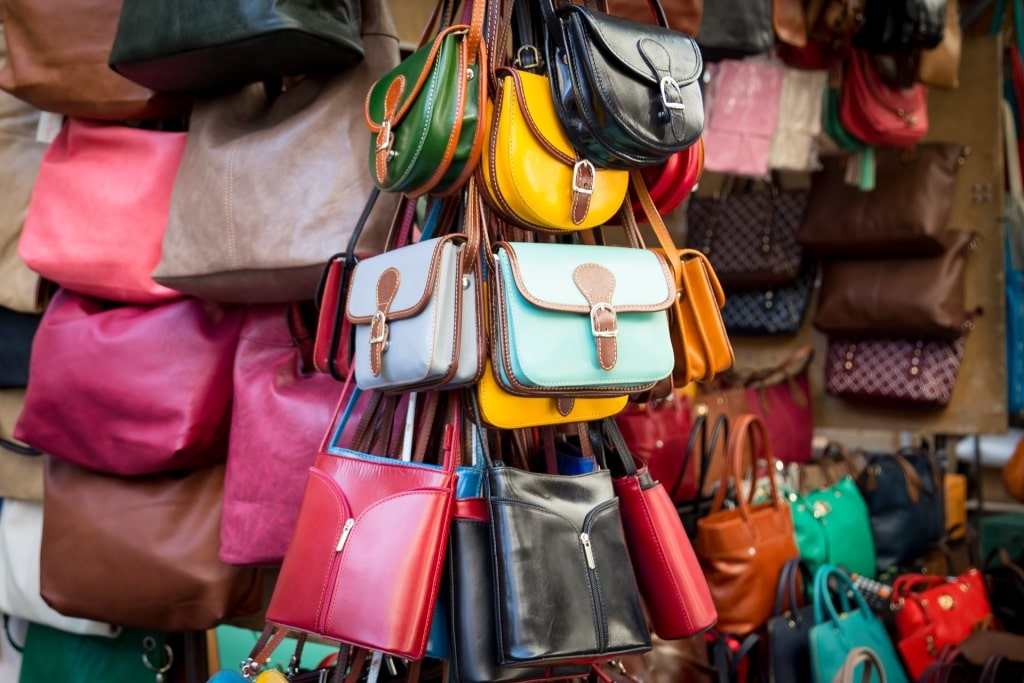
Mercato del Porcellino, Florence
Over the centuries, the Mercato del Porcellino has evolved from selling flowers, straw, and silk to focusing on locally-crafted leather goods and souvenirs. As you browse the leather-scented stalls, keep an eye out for the market’s central marble tondo. Statues of famous Florentines also inhabit niches within the loggia.
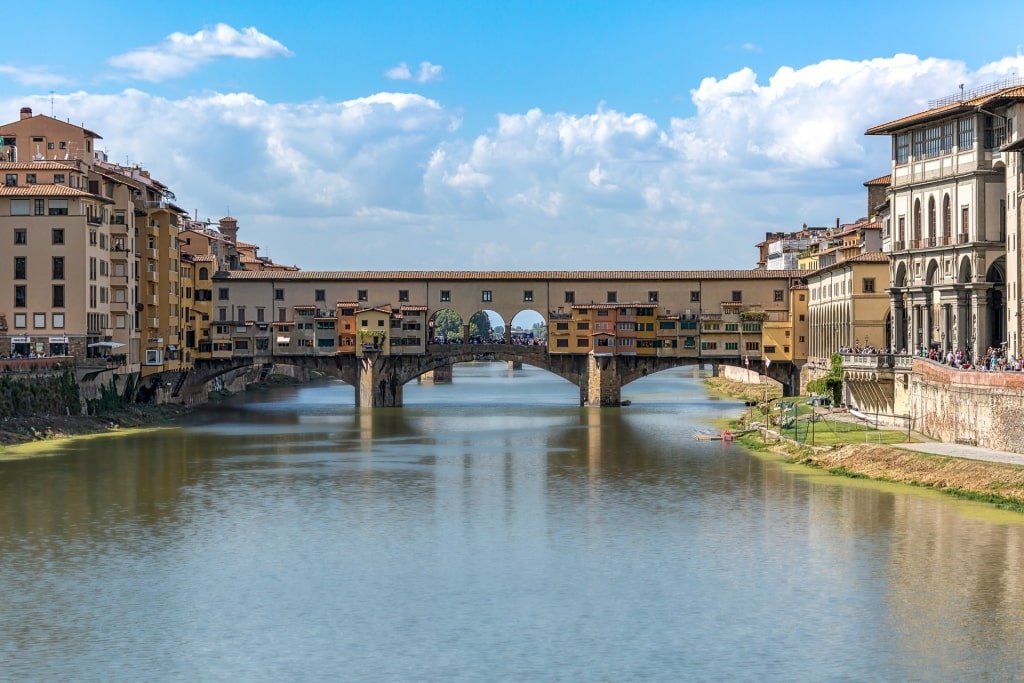
Ponte Vecchio, Florence
Afterward, parade your new handbag or Tuscan belt along the historic Ponte Vecchio, one of the most beautiful bridges in Florence, found just a short walk south of the market.
Mercato Coperto, Trieste
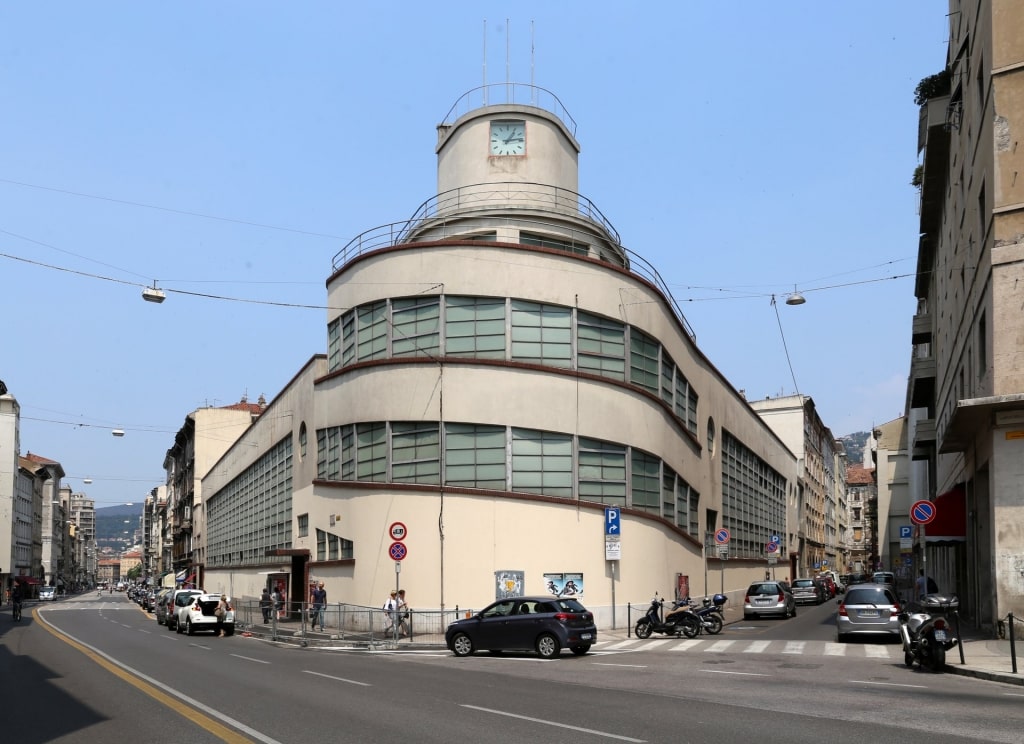
Mercato Coperto, Trieste Photo by Sailko on Wikimedia Commons, licensed under CC BY 3.0
The Mercato Coperto was an act of mercy. This Triestine market was created by the daughter of a rich English merchant who, upon visiting the city in the early 20th-century, witnessed the suffering of the stall owners (or “venderigole”) when the gusting Bora winds blew through the city.
The result was a 1930s architectural treasure. The Mercato Coperto’s Art Moderne facade is a local landmark, twisting handsomely just east of the Parco della Rimembranza. Within, securely sheltered from the elements and the march of progress, is a multi-level flea market and grocery that’s a slice of authentic Trieste.
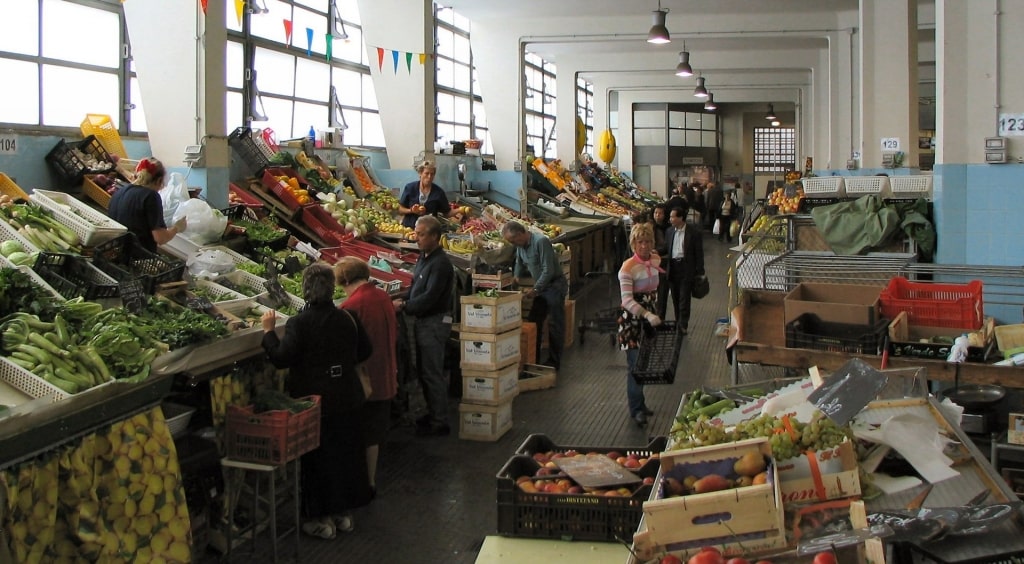
Mercato Coperto, Trieste Photo by Paolo Tosolini on Flickr, licensed under CC BY-SA 2.0
You’ll find mouthwatering local specialties shaped by Trieste’s unique position on the edge of eastern Europe, such as Prosciuttino Triestino—essentially a whole ham cooked inside a bread crust. Tables of old men drink glasses of wine and set the world to rights. Head upstairs for old vinyl, books, and antique bric-a-brac.
Read: Experience Italy in the Summer
Porta Portese, Rome
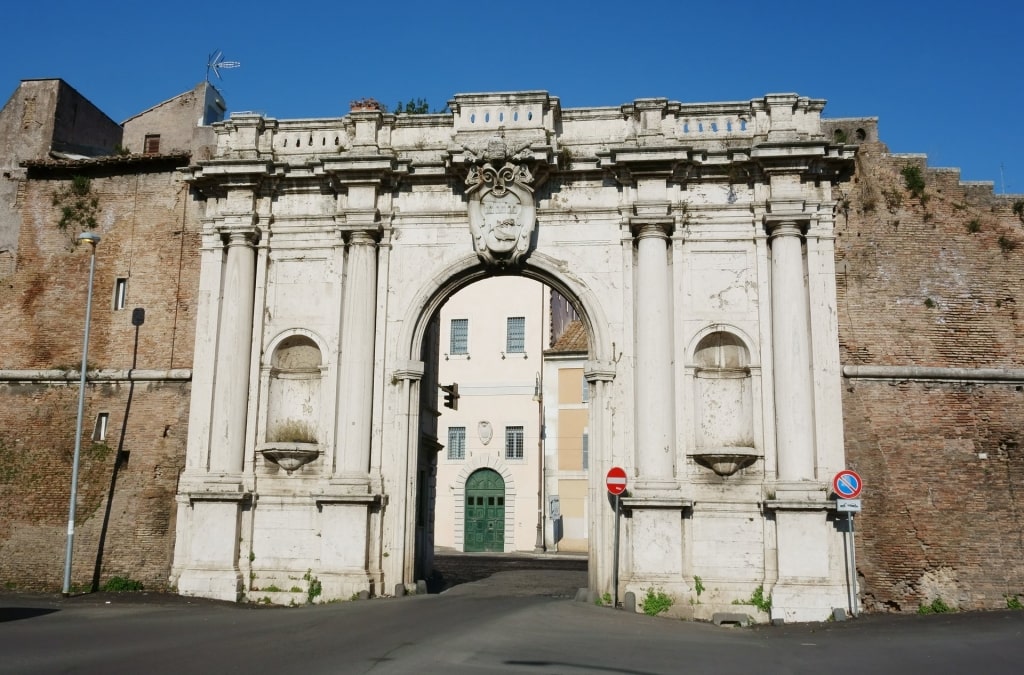
Porta Portese, Rome
There’s a saying about the Porta Portese, Rome’s largest market: “You can find anything, from a pill to a Jumbo Jet”.
Set up in and around the Porta Portese, a triumphal city gate that dates back to 1644, the Porta Portese is an epic flea market open only on Sundays. And while the jets might be all sold out, you’ll certainly find an encyclopedic selection of things such as spare bicycle parts, stamps, and even chandeliers.
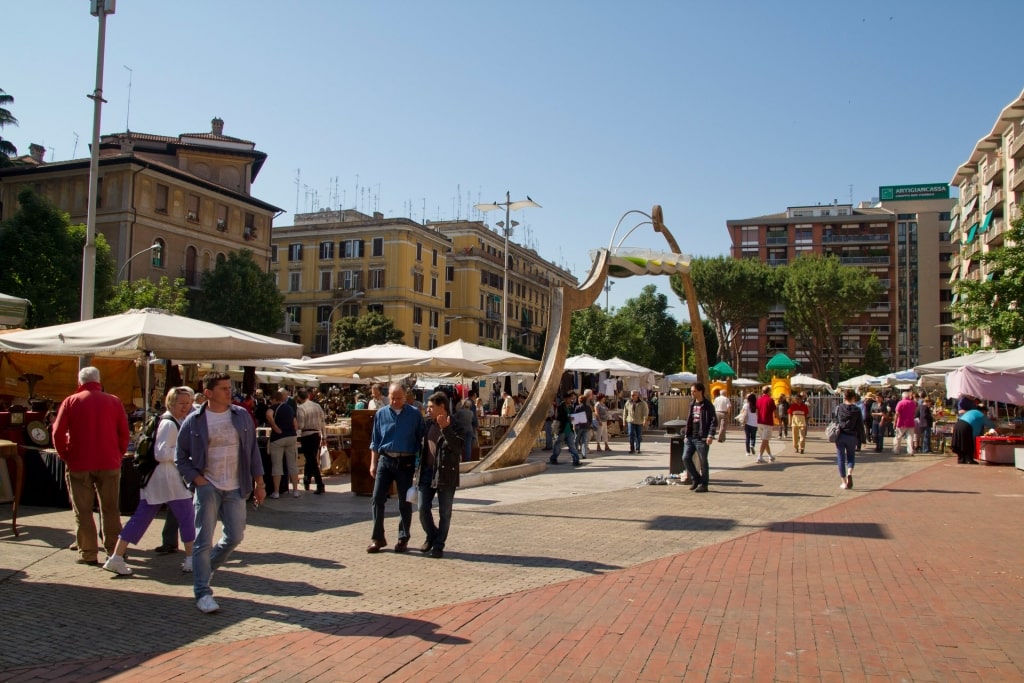
Porta Portese, Rome Photo by trolvag on Wikimedia Commons, licensed under CC BY-SA 3.0
As with many significant flea markets, there is also a generous amount of tat. Patience and a keen eye are essential to a successful trip to Porta Portese. You can attempt to haggle, although these stall owners can be difficult to persuade. Better the soft approach, with a genial comment about the weather or a show of enthusiasm for their wares.
Of all the markets in Italy, it’s at Porta Portese that an early start is most favorable to your deal-finding fortunes. Be one of the first to scan the tables of antique jewelry or to start sorting through the mound of vintage clothes in Piazza Ippolito Nievo.
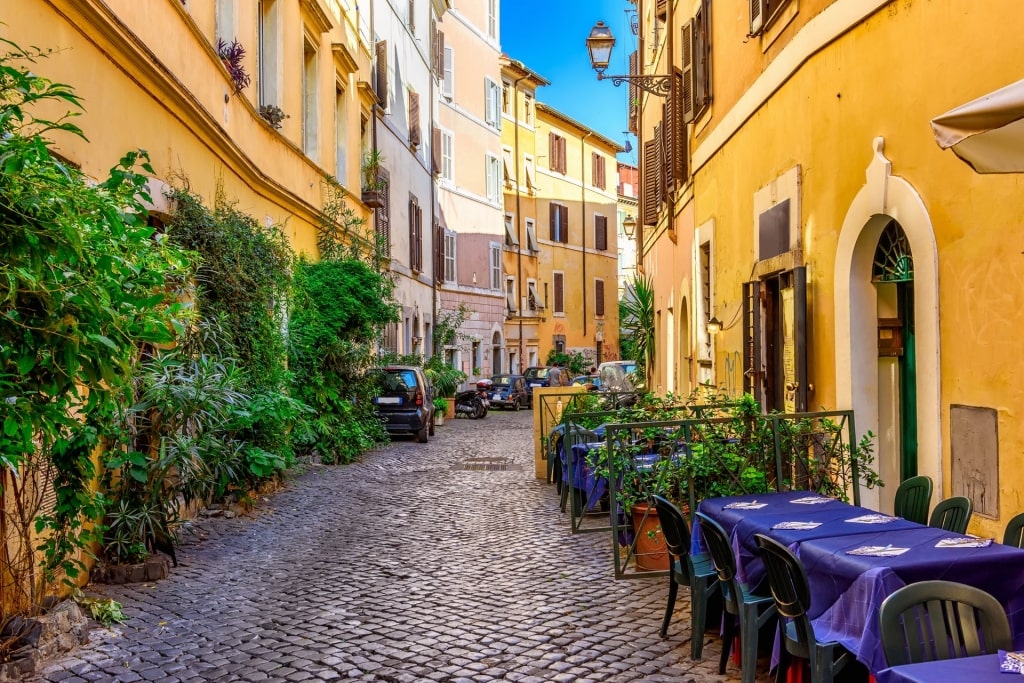
Trastevere
Afterward, treasure secured, locate the red Ristoro da Righetto food truck. Take away one of their succulent fried chicken sandwiches and explore Rome off the beaten path through the cobblestone lanes of Trastevere, feeling entirely Roman.
Read: Fascinating Landmarks in Rome to Discover
Mercato di San Benedetto, Cagliari
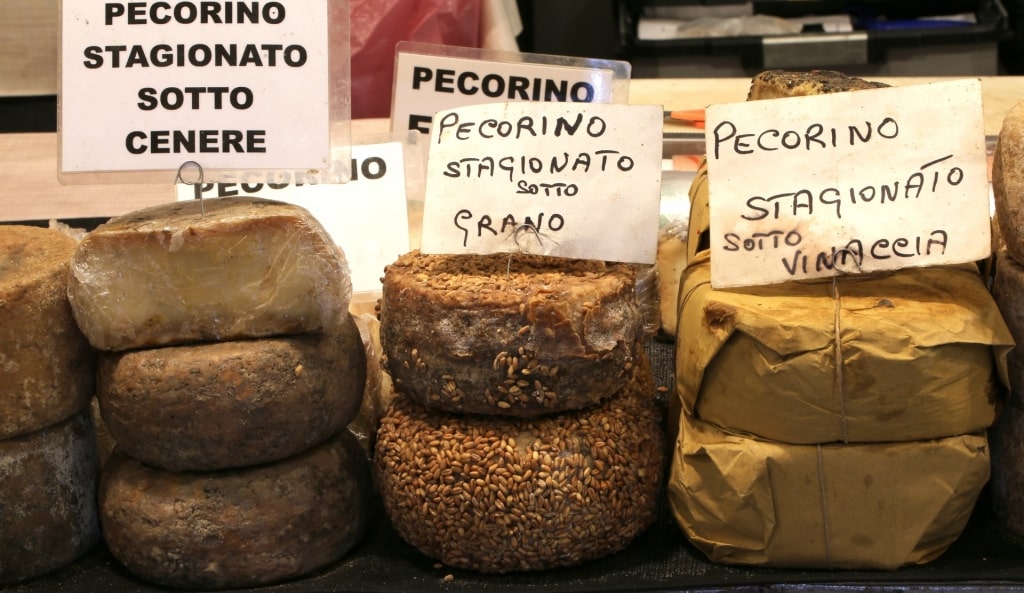
Mercato di San Benedetto, Cagliari
The immense indoor morning market of San Benedetto, Italy’s largest, is a bazaar of the delicious with an energetic vibe and a fog of rich aromas.
Within the 86,100 square feet, you’ll find all the flavors of Cagliari (and Sardinia as a whole), from giant discs of pecorino to the slippery bounty of the Gulf of Cagliari. It’s located on Via Cocco Ortu, only a few minutes’ walk west of Cagliari’s Centro Storico. When it was built in 1957, this part of the city was still the countryside.
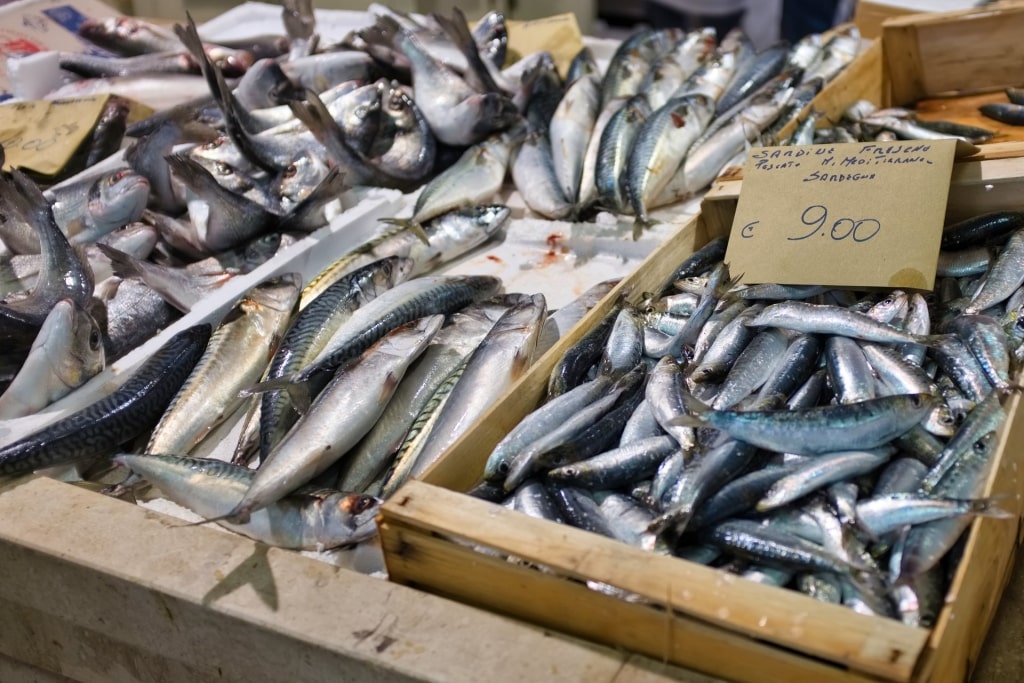
Mercato di San Benedetto, Cagliari
The first floor is entirely seafood. The stall owners banter as you peruse the lobsters, swordfish, and sea urchins laid out on ice before you. Some of the fish may still be wriggling, but don’t be alarmed.
When you purchase something here, you’re often given, along with your change, cooking advice, and a parcel of spices to go with your seafood. To secure the best prices, buy the fish between 1 p.m and 1.30 p.m.
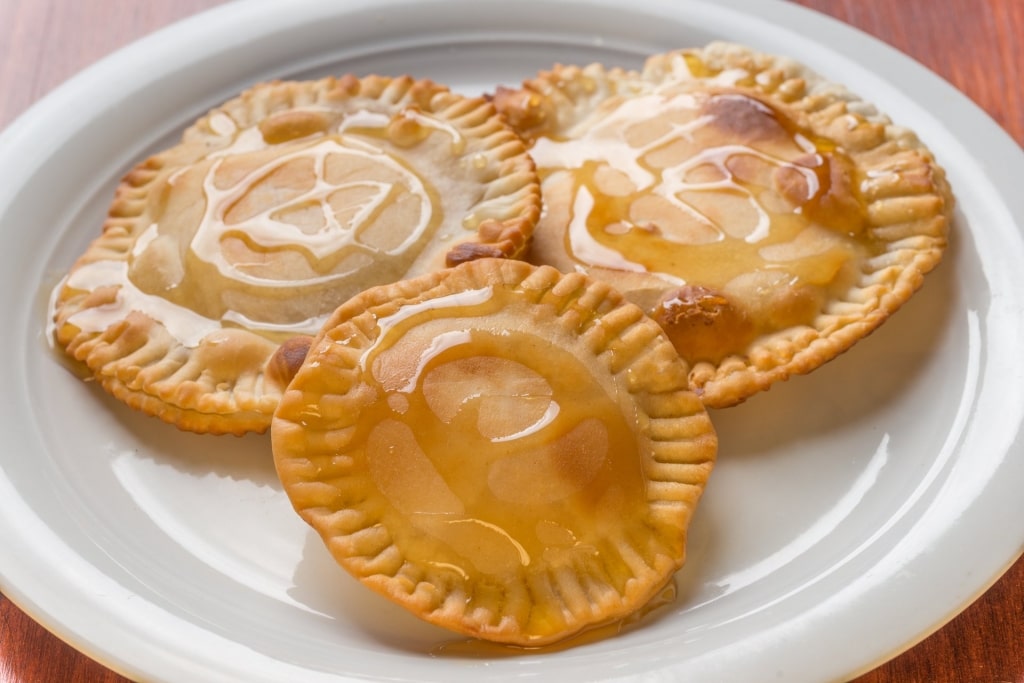
Seadas
Escape the briny scent upstairs where you’ll be greeted by acres of bread, cheese, and organic fruit and vegetables. Experience authentic Italian food culture and find the seadas stalls (traditional Sardinian pastries) for a honeyed memento of your experience.
Read: Best Beaches in Sardinia
Mercato di Porta Nolana, Naples
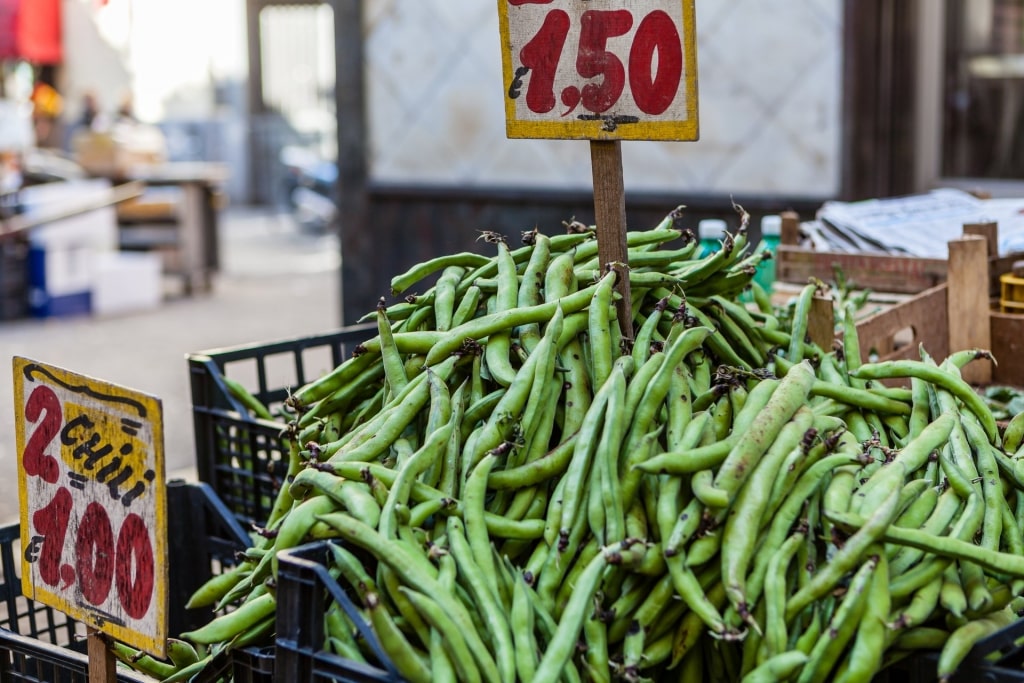
Mercato di Porta Nolana, Naples
A fantastic way to immerse yourself in the vivid local color of Naples, the Mercato di Porta Nolana is one of the coastal city’s liveliest markets.
Set around a bellicose medieval gate formed of two circular watchtowers now shaggy with foliage, you’ll hear the market before you see it. Pass through Porta Nolana and along the cobbled street leading into the historic section of the city and you’ll be consumed by it.
Wide staircases of aromatic vegetables descend towards the flow of shoppers as the marketeers holler from behind their displays. Behind the pavilions of furious commerce, tall mansions linger in states of elegant decay.
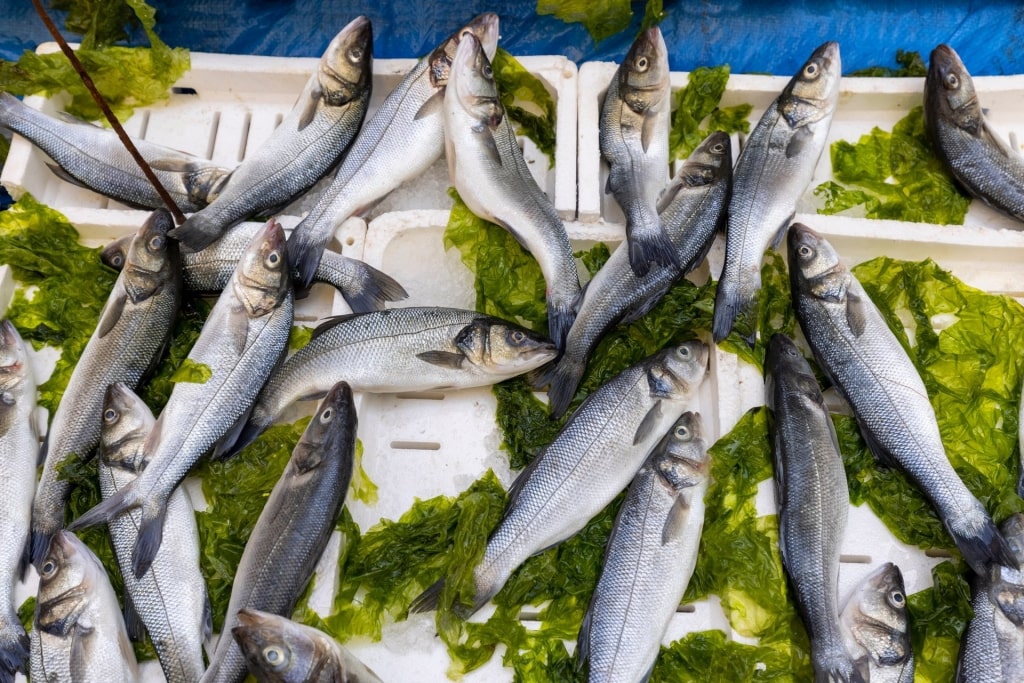
Mercato di Porta Nolana, Naples
Porta Nolana is particularly strong on the fresh seafood that Italy is known for. You’ll pass from the smell of the sea, with live octopuses on display in shallow pools, to the sweet scent of fresh-baked cornetti, to a blend of odors entirely unfathomable. Just as the market feels like it’ll go on forever it peters out.
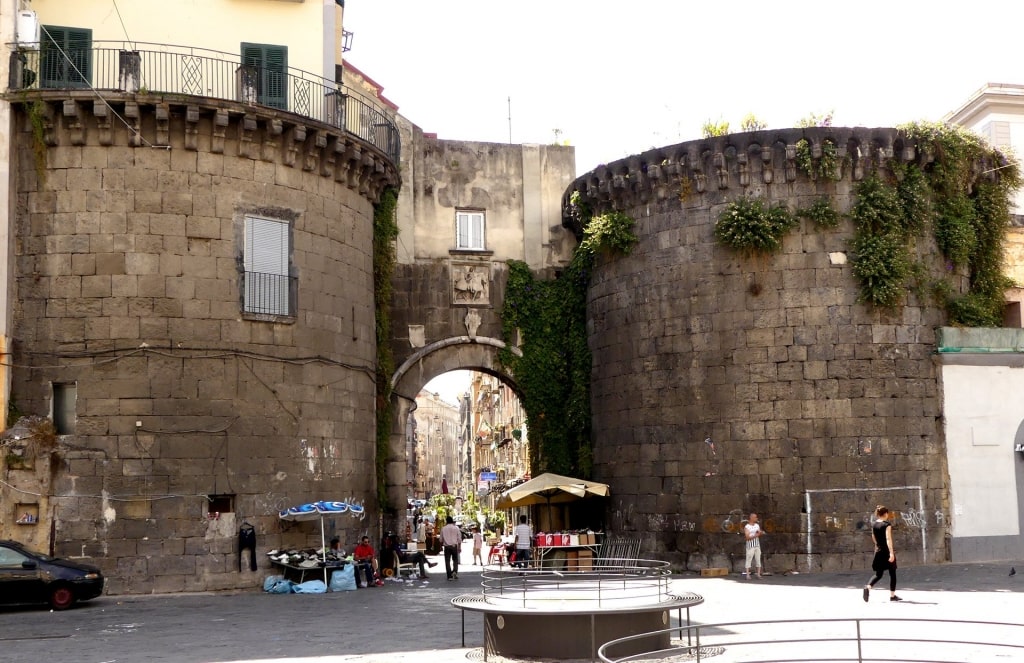
Tower of Hope and the Tower of Faith in Mercato di Porta Nolana, Naples Photo by Sergioizzo on Wikimedia Commons, licensed under CC BY-SA 4.0
Grouped around the Tower of Hope and the Tower of Faith (the names of the two circular watchtowers) you’ll also find intriguing raw milk cheeses, bargain luggage, and a symbiotic clothing market.
If you’re not too laden down with deals, purloin a little piece of local culture by spying the bas-relief of King Ferdinand I on the arch between the two towers.
Mercato di Piazza Carlo Alberto, Catania
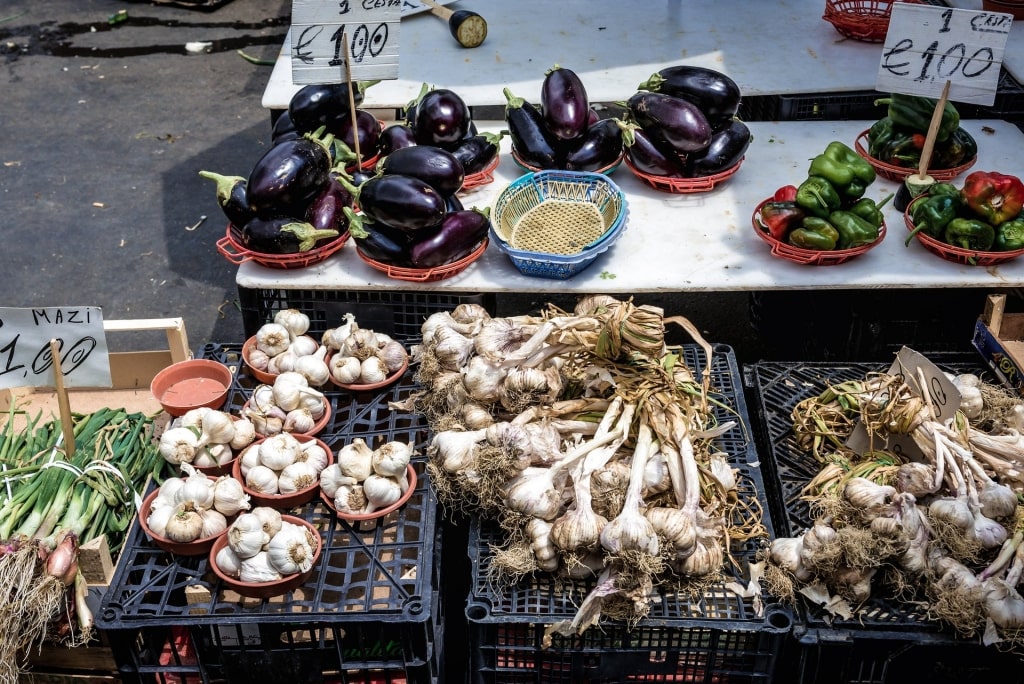
Mercato di Piazza Carlo Alberto, Catania
Beneath a sea of interlocking umbrellas in Sicily’s southern city of Catania, you’ll find one of the most characterful of the markets in Italy, Mercato di Piazza Carlo Alberto (or Fera ‘l Luni as it’s known to its friends).
This grocery and flea market is a cacophony of commercial intent, with Catanians single-mindedly seeking out their fake Armani purses, fresh tomatoes, or bargain second-hand clothes. Good news: if you find a bargain with a hole in it, you’ll be able to get it stitched up somewhere else in the market.
It’s here, amid the glistening red seas of strawberries, pyramids of oranges, and shooting galleries of pineapples arranged on tables, where the unfettered personality of this often-overlooked city is fully, irresistibly on show. The market is open every morning except Sundays.
Mercato di Mezzo, Bologna
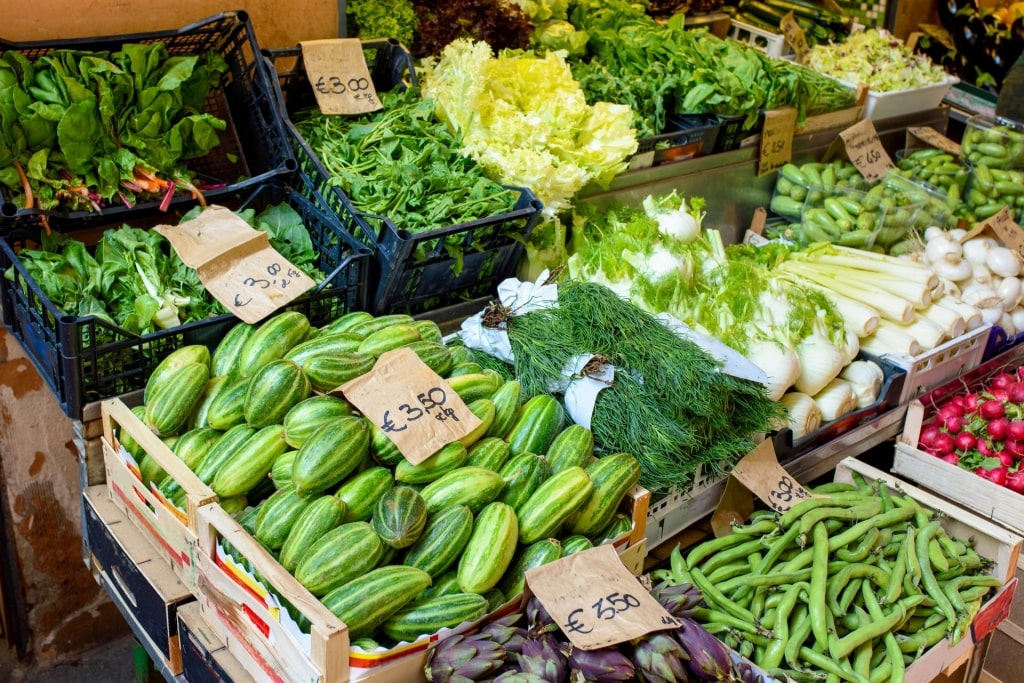
Mercato di Mezzo, Bologna
Any market in the heart of Italy’s breadbasket is going to be worth a visit, but the Mercato di Mezzo (The Middle Market) doesn’t just rest on Bologna’s laurels. Within this market-cum-food hall you’ll be presented with a brilliant buffet of raw and ready-to-eat delights.
Mercato di Mezzo, found just off Piazza Maggiore on Via Clavature, was the city’s first covered market. Its origins are medieval but the market enjoyed a glossy restoration in 2014. Downstairs you’ll find cheese, fresh seafood, and acres of fresh pasta, as well as Italian wines and craft beers to delve into.
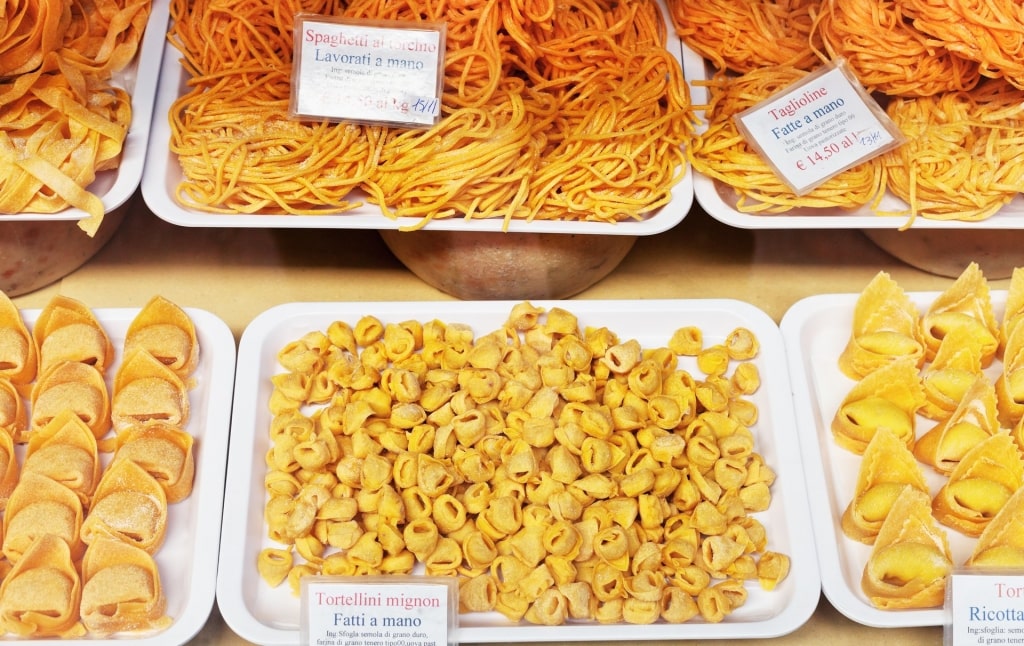
Mercato di Mezzo, Bologna
Or buy something from one of the kitchens here (think black rice with shrimp or stuffed zucchini). Stock up on Bolognese food to spirit away, or stay and enjoy the vibe and some of the best plates of tortelloni you’ll ever eat in your life (with plenty of change from a €10 note).
Mercato Ortigia, Syracuse
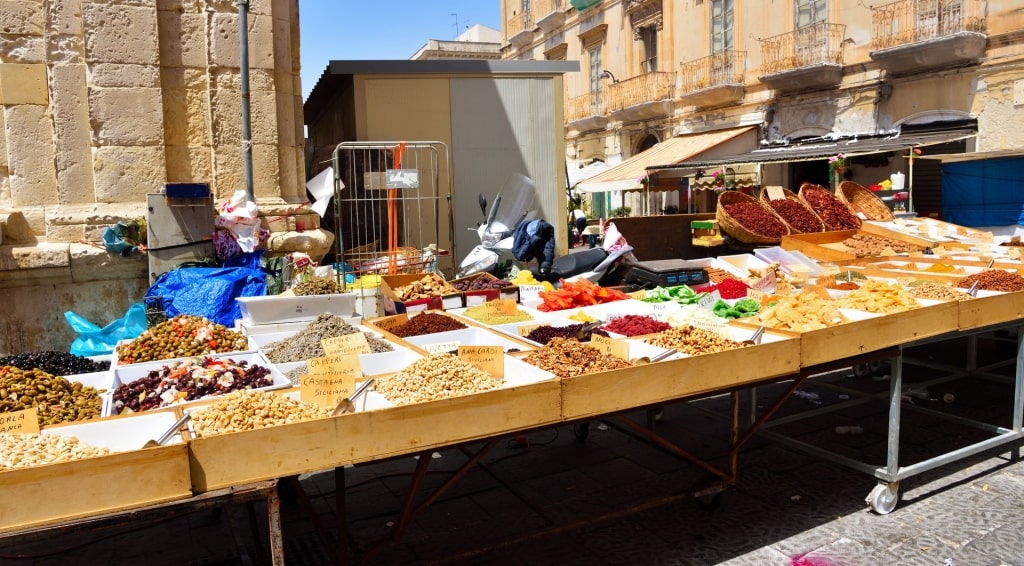
Mercato Ortigia, Syracuse
Every morning on the Via de Benedictis in Ortigia, the island heart of ancient Syracuse, there’s a morning market that swamps the street until 2 p.m.
Like all Italian markets lining a single street, it can feel like running a gauntlet. Stall owners gesticulate freely and tasters of oregano-seasoned, snow-white mozzarella suddenly obscure your vision; the consequences of refusal cannot be countenanced.
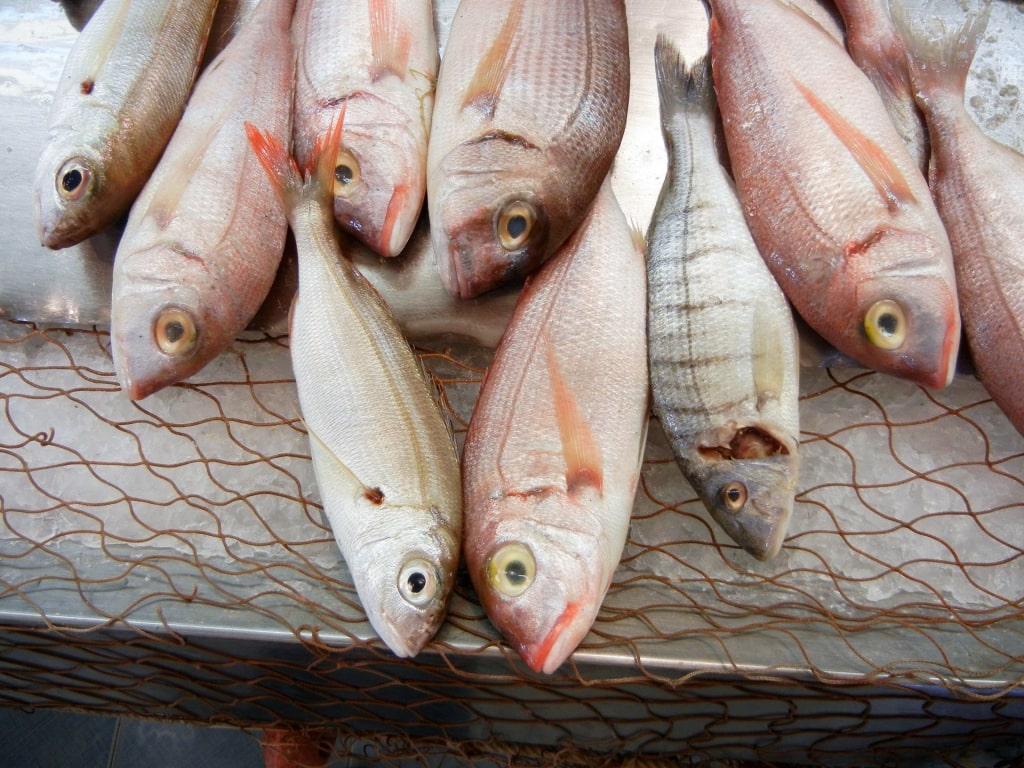
Mercato Ortigia, Syracuse
The seasonal produce rolls in with the local farmers across the Santa Lucia bridge. For the fishermen, access is much more immediate and it shows in the rainbow shimmer of the fish. If it’s all making you simply too hungry to focus, elbow past the students into the market’s highly regarded Caseificio Borderi for a salami and formaggio-stuffed panino.
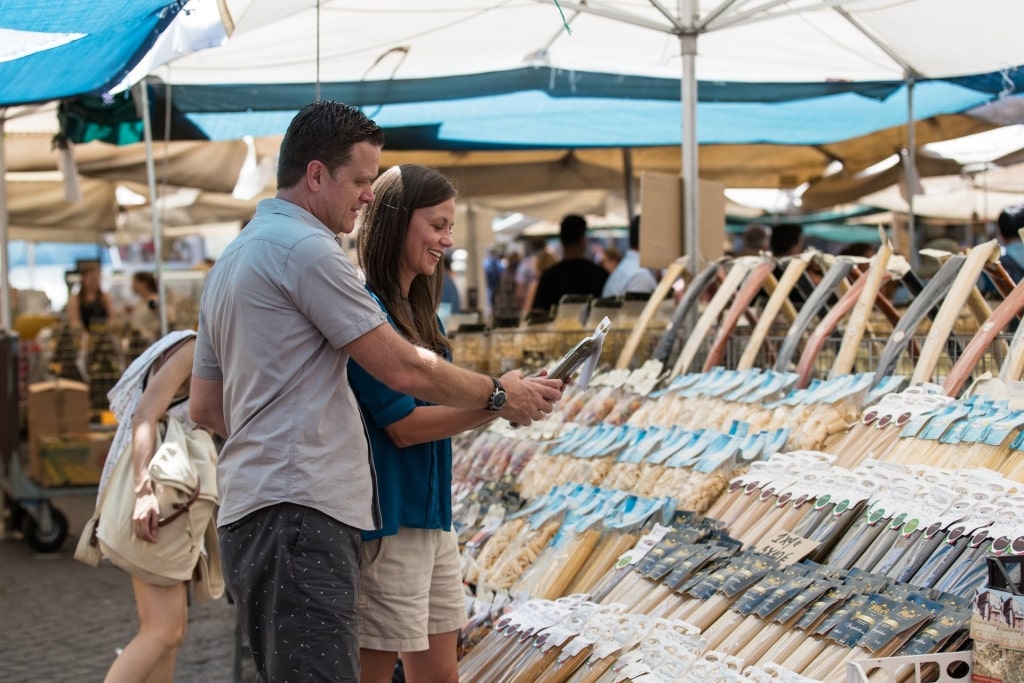
Mercato di Campo dei Fiori, Rome
See the Bel Paese’s bustling marketplaces for yourself on a cruise to Italy and discover its delicious fresh produce and mouth-watering “try-before-you-buy” opportunities. Browse cruise itineraries online and book a memorable vacation to a destination that’s home to some of the world’s finest food and wine.
